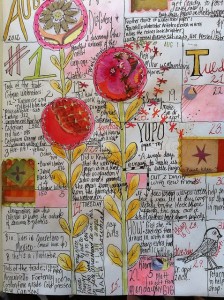
Do you see the world in black and white?
Do you find yourself using the words “always” and “never” when you talk or think?
Do you notice the idea of “should” coming up in your thoughts especially when you are thinking about what you need to take care of?
How about opposites. Do you find yourself looking at things from the end of the continuum instead of the middle? Like “starving and stuffed”, rather than “hungry and full”, or “mind-numbed” and “super- excited” rather than “bored and interested”.
These are all examples of black and white thinking. Hyperbole can be interesting in artwork or poetry but for people, this kind of thinking can get you into trouble. Steven Handel, in an article on The Emotion Machine website says that b+w thinking can make you less willing to compromise and less adaptive. This can cause a narrow view of the world and frustration for those around you. It can keep you stuck in old habits and ways of thinking. Without some open-mindedness you can be snagged by the limitations of your thinking.

Andrea Wachter and Marsea Marcus coined the term “rainbow thinking” in their Don’t Diet, Live-it Workbook.
The idea is to find thoughts that are in between the black and white but don’t have to be gray.
Here are some examples:
Black: ugly White: beautiful Rainbow: good the way I am
Black: stupid White: genius Rainbow: smart but imperfect
Black: hate White: love Rainbow: dislike but not totally, or like but with some exceptions
You get the idea.
The trick is to notice when you are engaged in the extreme thinking and find ways to pull your mind towards the middle. Hope you find it interesting. Another way to think about this is to consider ways to be kinder towards yourself.





 Photo by Teodoro S Gruhl at
Photo by Teodoro S Gruhl at 


